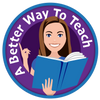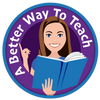The New York Times has some amazing resources that can allow your students to connect with current events, become inspired, and develop their writing skills (sometimes all in the same class period)! Aside from the media component as the paper of record, there’s also The New York Times’ The Learning Network designed for teachers. There are many ways you can use this resource; this is not an exhaustive list at all, but it's a few easy-to-implement strategies you can use today.

Use The NY Times Photo Prompts For Grammar and Writing
The New York Times photographs are an amazing option to use as photo prompts for writing in secondary ELA. In fact, there’s a whole section for multimedia to adapt to your classroom needs.
You might us any number of photographs for a warm-up activity or bell ringer to get students on task and focused on a specific topic. Share a photograph, with or without the caption, and have students write questions they have of the image or connections they can make to the image with what they’ve read recently in class.
Use Picture Prompts For Grammar Lessons
One of my favorite strategies for teaching and reviewing grammar is to give students a photo prompt and have them write about it with a specific grammar concept in mind like vivid verbs, an opening adjective phrase, or a delayed adverb. But it's a lot of work to scour the internet for good pictures. Fortunately the NY Times is chock full of amazing pictures, perfect for this type of activity.
If you want a no-prep grammar unit that shows you how to use this strategy, as well as other research-based strategies to teach grammar, grab this lesson by clicking on the picture below.
Using NY Times For Bell Ringers
The section “What’s Going On in This Picture?” works as a trifecta to develop students’ skills for visual literacy, media literacy, and inference skills.
On Mondays, a new picture–without its caption–is added and students can review the picture with a few guiding questions.
At the end of the day on Thursdays, the paper reveals the full details of the picture. This provides a built-in self-check for students. This process can create two days of bell ringers for you.
Here’s how I would do it for the classroom:
At the start of any class (before Thursday afternoon), display the image and ask students to respond to the three questions
- What is going on in this picture?
- What do you see that makes you say that?
- What more can you find?
Then, revisit responses to the questions on Thursday or Friday when the paper reveals the caption and details about the picture. As the last step, give students an opportunity to reflect on their earlier responses, particularly their conclusions in question 2 (the support for their ‘reading’ of the picture).
The task can be for peer or self-assessment only. The reflection component is important for students to gauge their own progress. Plus, this is a reminder that you don’t have to collect and grade everything your students complete in class! To get more advice on tackling grading in high school English, check out this post "How To Not Drown Under Your Load of Paper Grading."
Use The NY Times To Give Your Students An Authentic Audience
Having an authentic audience is key for students to engage and to invest in writing assignments, and The New York Times is a hub of opportunities for authentic audiences.
Utilize The Student Opinion Section
This section is the stuff that ELA teacher dreams are made of.
Here's the skinny: students go to this page and choose an article of interest. They read the article and then comment on the issues that come up in the article by responding to specific questions the Times already has listed.
By doing this, students get to weigh in on real-world issues and interact with their peers in respectful dialogue. What an outstanding supplement to teaching students digital literacy, respectful discourse, and persuasion techniques.
Encourage Participation in Student Essay Contests
Things get real when someone besides your teacher is going to read your essay. That's one of many reasons I find it valuable to give students an authentic audience for their writing whenever possible, and contests are a great way to do this.
Check out the NY Times Essay Contests, which include options for narratives and more. They update the list of opportunities throughout the year and include additional lesson plans and resources to provide support.
I designed an entire personal narrative unit with the end in mind of students entering their personal narratives into a writing contest. This truly adds a level of buy-in from students and they write some amazing narratives.
The New York Times Is Great For Mentor Sentences and Mentor Texts
The New York Times is a mentor sentence finder's dream! Within any section of the newspaper, students can gain insight into what’s happening in the world around them and find a plethora of mentor sentences to emulate in their own writing.
This article includes a great method for how to have students find their own mentor sentences "Sentences That Matter, Mentor, and Motivate." In this article the teacher explains how she'll give her students a few straight-forward parameters for finding mentor sentences such as "find a short, punchy sentence," or "a sentence that uses a long dash." Students set out to find these sentences and then imitate the sentence. How simple is that?
Plus, any opportunity we can take to give students a chance to read about an issue that is interesting and relevant to them is going to up the student buy-in. By finding mentor sentences in an article of interest, students are thinking about both content and form.

You can also use the Times for mentor texts. Looking to have students write opinion pieces? Have them review different editorials in the Times’ Opinion section. Students can identify the use of ethos, pathos, and logos in specific sentences within each piece.
Want students to write a news report based on something from a class novel? Review the main section of the paper to see how facts are reported. What type of language is used? What does the structure look like for a current events article?
NYT Works For Sub Plans
If you need to take a day out of class and need a ready-to-go sub-plan, the Times can also come in handy. The New York Times’ The Learning Network has an entire section devoted to lesson plans for all grades. Their Lesson of the Day listings include categorized for current events and global issues. Just another way to add more media literacy and critical thinking opportunities into your classroom.
Takeaways:
The New York Times’ The Learning Network is one of my go-to resources for all levels of secondary ELA. The materials are of great quality, access to the site is easy, and the content can easily be differentiated for all of the students in your classroom.
Shop This Post
Related Reading
Sentences That Matter, Mentor, and Motivate
4 Amazing Ways To Give Your Students Authentic Audience When Writing







Leave a comment